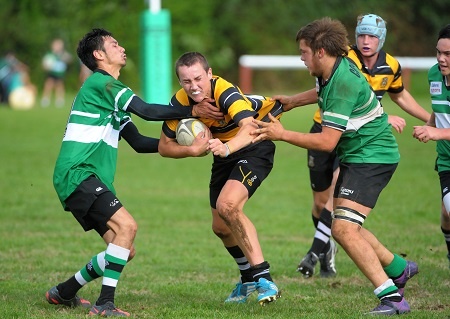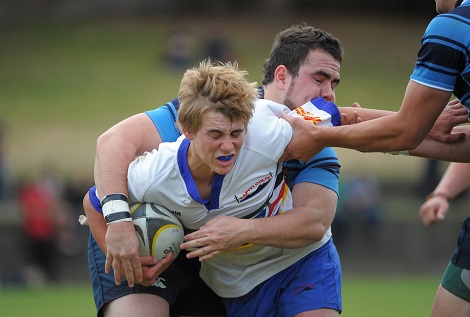- Rugby Toolbox
- Resources & Education
- Learn more
- Articles
- Snook on Coaching
- Contact and Continuity
- Ruck & Run Drill
- Playing Philosophy – Ruck & Run Coaching Components
- Playing Philosophy – Spread the Forwards
- Playing Philosophy – A forward behind the ruck
- Playing Philosophy – Ruck & Run
- Playing Philosophy – An idea!
- The Breakdown
- Building Positivity [3]
- Building Positivity [2]
- Building Positivity
- Fitness and Game Related Activities
- Getting the Head Working
- Missiles are Dangerous
- Use of Video
- Winger Attacking Outside First-Five
- Player Profiling
- Selection
- Fitness Away from the Team Session
- Playing Philosophy (Pre season Prep)
- Coaching the Coaches
- The Rugby Coordinator and Pre-Season Preparation
- Why Not Use Tap Penalties More Often?
- Why Kick the Ball Down the Middle of the Field?
- Defending the 5 Metre Lineout Drive
- Scoring from the 5 Metre Lineout
- What are the Kicking Team Aiming to Achieve from Halfway Restart
- Should We Practice Scoring Tries?
- Team Culture
- Looking After Your Players
- Coach Survival Tips
- Under 11/13 – Backline Defence
- Under 11/13 – Ruck Defence
- Under 11/13 – Back Attack
- Under 13 – The Counter Attack
- Under 11/13 – The Maul
- Under 11/13 – Lineouts
- Under 11/13 – Decision Making
- Under 11/13 – Support Play
- Under 11/13 – Dive Pass and More
- Under 11/13 – Drop & Grubber Kick /Highball Catch
- Under 11/13 – Front on Tackling
- Under 11/13 – Contact – Getting Up – The Ruck
- Under 11/13 – The Coaching Session
- Under 8/10 – Using Space
- Under 8/10 – Kicking
- Under 8/10 – Contact and Picking Up the Ball
- U8/U10 Draw & Pass and Sidestep
- Under 8/10 – The Tackle
- Under 8/10 – The Coaching Session
- Under 7 – Test Your Coaching – Support Play
- Tap Pass and Swerve U7
- Ball Familiarisation; Passing & Receiving
- Activities for the Non-Contact Tackle
- Under 7 – The Coaching Session
- Coaching Teenagers – After the Ruck
- Coaching Teenagers – The Practice Session
- Coaching Teenagers – Best Practice
- Coaching Kids – Best Practice
- Plays from a Tap Penalty
- Running Plays from a 5 Man Lineout
- Driving Plays from a 5 Man Lineout
- Strike Plays at the End of the Lineout
- Back Strike Plays at the Lineout
- Wide Strike at the Scrum (2)
- Wide Strike at the Scrum
- Midfield Attack at the Scrum
- No 8 Plays at the Scrum (2)
- No 8 Plays at the Scrum
- The Cut Out Pass
- Skills to Penetrate (2)
- Skills to Penetrate
- Movements to Penetrate
- Patterns to Penetrate
- Contact and Continuity
- Keeping the Ball Alive Out Wide
- Pre Season Support Activities
- Checklist
- Understanding the game
- The Playing Philosophy
- The Lineout
- Overview
- Team Profile
- Start Now!
- Backrow
- Nine and Ten
- Rugby-related Fitness Activities
- The Psychological Edge
- Open Field Play
- Key Performance Indicators
- Improving Team Performance
- Backline Attack Concepts
- Tactics at Phase Play
- Playing Philosophy
- The ‘Stop Focus’
- Kick Attack
- Clearing the 22
- Wide Attack at Phase
- Player Focus
- Scrum Preparation
- Lineout Preparation
- Back Attack Preparation
- Sevens Preparation
- Sevens Kick Offs
- Sevens Scrum and Lineout
- Sevens Attack Patterns
- Sevens Defence
- 7's Selection and Game Planning
- Coaching and Leadership
- How the Game Evolves
- Changing Within the Game
- Learning from the Television.
- Using Tap Penalties Wisely
- Defence Drills
- Defence Drills for Tight Five
- Team Defence and TUB’ing
- Establishing Patterns from the Ruck
- Structured Phase Play
- Structuring Phase Play on the Run
- Coaching Roles
- Structuring a Close in Tackling/Defensive Session
- Coaching in Threes
- Attacking Back Play
- Kick Off Chase
- Wrap Around Back Plays
- Lineout Plans
- Looking and Learning
- Motivating Your Players
- Scrum Attack
- Refocusing the Team
- Monitoring the Progress
- Learning the Game
- Playing to the Laws
- Small is OK
- Decisions After the Tackle
- Improving Your Coaching
- Food for Thought
- More Food for Thought
- Passing & Catching
- How Ireland Nearly Beat the All Blacks
- The Progressive Coach
- Try Something New
- Encouraging Excitement
- The Mental Approach
- Where to Start
- Being the Best You Can Be
- Off the Ball Decisions
- Lineouts Difficult to Master
- Decisions on the Run
- Rucking and Rolling
- A Successful Approach
- Gaining Clarity
- Manipulation vs Physicality
- Beating the Drift
- To Ruck or Not to Ruck
- Stopping the Lineout Drive
- Fine Tuning the Planning
- It's a Running Game
- RugbySmart 2015
- Using the Shoulders
- Loosehead Prop / Tighthead Prop
- Position Specific – Hooker
- Position Specific – Lock
- Position Specific – Blindside Flanker
- Position Specific – Openside Flanker
- Position Specific – No 8
- Position Specific – Halfback
- Position Specific – First Five Eighth
- Position Specific – Second Five Eighth
- Position Specific – Centre Three-quarter
- Position Specific – Wing
- Position Specific – Fullback
Contact and Continuity

Having watched a large number of schoolboy and club games recently the major issue for almost every team is the inability to score tries through a succession of good quality contact and continuity skills.
In many cases the success of a team is entirely dependent upon a few key individuals who are either bigger, stronger, faster, more skillful or all of the afore mentioned.
There are a large number of skills and tactics involved in achieving continuity which a team needs to practice and understand so that there can be a link between the set piece and the scoring of a try.
The most common is of course the ruck but even the ruck has a few sub-plots that can be used such as the pick and go, pairing up and driving away together, pop pass to a bursting player, passing to the second instead of the first receiver, bypassing the first two receivers and passing to the third receiver, the first receiver popping a short ball to a bursting runner, and so it goes on.
Using the ruck as the example the coach then needs to make a plan as to what is going to happen once the third receiver catches the ball from the passer, and so on. This is where the tactics come in.
Technically the skills in a ruck are taught. These recover and recycle the ball. Next comes the tactical planning and it is this area of the game that helps with the continuity. The number of teams that use a 'one-off' runner who then struggles to recycle quick or clean ball are numerous and in all reality are a blight on the game.
With this in mind with the focus initially on the ruck aspect of continuity set up your game.
Step 1: Play a Game.
In a 20m x 20m grid start with a 7 + 2 (9 & 10) versus 5 + 2. The first group (3 or 4) will set the ruck and the attackers need to come up with some options that will get in behind the defence and score a try.
In the first instance you are looking at the attack scoring via a good ruck and a play from after the ruck that creates doubt and confusion in the defence. The object for the group of attackers after the ruck is to get in behind the defence and keep the attack going forward.
Depending on how successful the attack is and the quality of the players more numbers could be introduced on each side.
Step 2: Tactical Feedback. Discuss with the players (and those observing) what they have seen and what they might do differently to make the play more successful.
The coach might prompt with some of the following questions:
How can the halfback become a threat? (quick pass / run at first defender before the pass)
Do you make a different decision based on where the defenders are positioned?
How do you achieve your timing?
What is the aspect of your play that confuses your opponents?
What is the aspect that ensures you are going to penetrate somewhere along the line?
How is your width, depth and angle of run used to create a successful play?
What continuity skills could be used following the next contact situation?
Who is going to be involved in this contact situation? Here have they come from?
This is a very basic scenario but one which needs a bit more thought in most cases than is seen at the moment. Following the ruck there are situations that may require standing in the tackle; mini mauls; passing after the tackle off the ground and so on. The players will come up with these concepts and introduce them in to their activities.
Step 3: Skills Feedback: There are the basic skills associated with the ruck plus passing and catching. Then there are the skills associated, scanning and decision making, timing the run, stepping in to space and so on.
Ask the players what they believe these skills are. Who needs to practice which skills?
In future trainings the coach could set up some activities to practice these skills before going in to the game scenario once again.
Remember: it is the coaches job to pose the problem and guide the discussion if necessary. He must have an idea of what he is looking for so that the activity can keep improving. Then he needs to be able to offer some technical advice to ensure that the players improve. This is what coaching is about.
In the case of contact and continuity there is a huge amount of options so it is important that the coach initially covers off the basic situations that the players devise.
Ultimately it would be great for players to recognise and practice different forms of continuity.
Much of what is required for instruction can be found in the Coaching Toolbox.